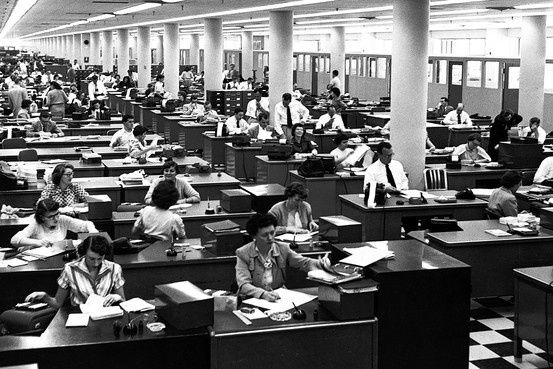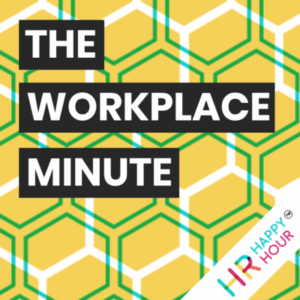Executives Beg for Return to Offices, Revealing Just How Out of Touch Many of Them Remain
June 13, 2022
In the last few months several well-known and influential business leaders (Elon Musk, Jamie Dimon, Howard Schultz, etc.), have gone on record advocating, and in some cases requiring, remote and/or hybrid workers to return to their offices and workplaces after an extended period of pandemic-driven remote working. The specifics of what these and other business execs’ positions around return to workplaces vary; in some cases “permanent” hybrid schedules are expected of employees, with 2 -3 days in the office being the most common. Others, such as with Musk’s Tesla, seem to indicate all remote/hybrid workers begin to report back to in-person work at physical facilities full-time, or plan to, in Musk’s words, “Pretend to work somewhere else”.
These executive pronouncements and demands for the increased return to in-person work, whether full-time or at least “more” in-person work than had become the norm throughout the pandemic, come at a time where employees have consistently and clearly expresses their reluctance to return to in-person work, and their increasing willingness to push back on executive calls for more in-person work. Most studies of worker preferences around the continuation of remote and hybrid working arrangements have been clear – the vast majority of workers still want flexibility in their work schedules and locations. According to the Slack Future Forum Pulse Survey, 79% of knowledge workers say they want location flexibility, and more than 9 out of 10 knowledge workers—94%—say they want schedule flexibility. Additionally, the Pulse survey shows that non-executives are facing far more strain during the return-to-office era than leaders in the C-suite, further widening the existing executive-employee disconnect on key job satisfaction measures. Non-executives’ work-life balance scores are now 40% worse than executives’, falling at five times the rate of executives over the last quarter. Non-executives are also reporting more than twice the level of work-related stress and anxiety as executives.
But yet faced with these realities, and not even taking into consideration the rapidly increases in employee commuting costs driven by a sharp rise in gasoline prices to record highs in the US, execs like Musk and Schultz are still bemoaning the fact that employees are not rushing enthusiastically to return to their offices, (and their commutes, and reduced flexibility). Truly, most execs are just not in touch with the average employee’s circumstances, situation, preferences, and stress levels. Schultz’s recent comments about the return to workplaces are particularly instructive. The Starbucks CEO was recently quoted on the topic of return to workplaces and offered the following:
“I have been unsuccessful, despite everything I’ve tried to do, to get our people back to work,” Schultz, 69, said. “I’ve pleaded with them. I said I’ll get on my knees. I’ll do push-ups. Whatever you want. Come back.”
He continued: “No, they are not coming back at the level I want them to. And, you know, we’re a very collaborative, creative group. I realize I’m an old-school person and this is a different generation.”
Breaking down those comments reveal the disconnect between Schultz (and many other execs) and the workforce. His reasons he wants people back in offices can be interpreted as being “I will just feel better if people are in the office”. He does offer an off-hand comment about collaboration and creativity, but there is not any real data or research that shows collaboration, creativity, innovation etc. are suffering with employees working from home, or primarily remotely. Finally, he essentially admits his views are “old-school” and are likely out of touch with a new generation(s) of workers. At 69, Schultz is a baby boom leader, unlikely to face most of the issues facing the Starbucks workforce – childcare and schooling, elder care, the high cost and stress of commuting, and lastly, the ability to balance work and life more effectively. The most disappointing part of his comments is that he acknowledges that they have no real basis other than it’s what his 69 year-old, old-school outlook has trained him to believe.
Employee flexibility, around work location and with work schedules, will succeed only if leaders are willing to set aside outdated conceptions of how, when, and where work should be done. The gap between what old-school leaders like Schultz are seeking, and what employees are clearly demanding is real, and potentially growing. If not addressed, this gap between what workers want and what executives are prepared to provide, suggests there will be continued negative impact to employee experience and likely another wave of resignations as workers seek employment at organizations that offer the flexible working options they’re demanding. We debated “The Future of Work” for so long, many weren’t prepared for that future to arrive all of a sudden. That future is now, and how leaders and organizations respond to that reality will be the most interesting work and workplace story for the next several years.
How we can help
Led by Trish Steed and Steve Boese, H3 HR Advisors harnesses over 40 years of experience to delivery HCM insights and guidance to global organizations.
H3 HR Advisory services
By leveraging technology, analytics, and our deep industry knowledge we can help you to reposition your workforce and ensure that you have the right people with the right capabilities in the right roles to positively impact the growth of your business.
HR Happy Hour Podcast Network
Created in 2009, The HR Happy Hour Show is hosted by Steve Boese and Trish Steed and is the longest continuously running internet radio show and podcast on Human Resources, HR Technology, Talent Practices, Workplace and Leadership topics.
H3 HR Speaking Services
We work closely with every client to customize your content - keynotes, webinars, research, infographics, and buyer’s guides - to inspire, educate and inform the audience enabling you to reset and realign your organization for a talent-led breakthrough.
Get in touch
Talk to us today and find out how we can help you and your organization leverage HCM technology to attract, onboard, retain and manage top talent.




